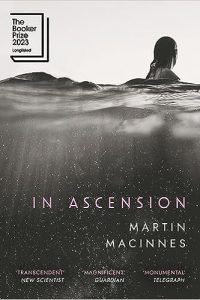Gary K. Wolfe reviews Charlie Jane Anders
All the Birds in the Sky, Charlie Jane Anders (Tor 978-0-7653-7994-8, $25.99, 320pp, hc) January 2016.
 Charlie Jane Anders takes a number of fascinating genre risks in All the Birds in the Sky, her first SF/F novel, and one of the most prominent is implied by that slashmark between SF and F: the basic concept of the story revisits the aging but indomitable trope of science versus magic, centered around the two best-friend main characters, one of whom is a powerful witch and the other a brilliant, cutting-edge scientist. In the long history of magic vs. science stories, magic nearly always wins out in the end (even when they’re written by stone-cold materialists), so most readers will have a pretty good suspicion of how this tension is going to resolve itself. And, over in the romance arena, the familiar trope of inseparable childhood pals who drift apart in adulthood and later meet again, bouncing off each other like pool balls for a while, is almost always going to end up exactly where we expect it to. Finally, one of the most beloved tropes in SF is the Big Experiment That Goes Really Badly Awry, and Anders has one of those as well. In brief, there ought to be little to surprise us here – and yet All the Birds in the Sky is one of the most surprising novels I’ve read this year, and for the most part one of the most delightful. Anders manages to make all these risks pay off, even when she goes all cosmological in the end, and her main tool in accomplishing this is something as simple as tone.
Charlie Jane Anders takes a number of fascinating genre risks in All the Birds in the Sky, her first SF/F novel, and one of the most prominent is implied by that slashmark between SF and F: the basic concept of the story revisits the aging but indomitable trope of science versus magic, centered around the two best-friend main characters, one of whom is a powerful witch and the other a brilliant, cutting-edge scientist. In the long history of magic vs. science stories, magic nearly always wins out in the end (even when they’re written by stone-cold materialists), so most readers will have a pretty good suspicion of how this tension is going to resolve itself. And, over in the romance arena, the familiar trope of inseparable childhood pals who drift apart in adulthood and later meet again, bouncing off each other like pool balls for a while, is almost always going to end up exactly where we expect it to. Finally, one of the most beloved tropes in SF is the Big Experiment That Goes Really Badly Awry, and Anders has one of those as well. In brief, there ought to be little to surprise us here – and yet All the Birds in the Sky is one of the most surprising novels I’ve read this year, and for the most part one of the most delightful. Anders manages to make all these risks pay off, even when she goes all cosmological in the end, and her main tool in accomplishing this is something as simple as tone.
For its first third, All the Birds in the Sky is an absolutely terrific YA novel about two brilliant misfit kids coping with the triple threats of dunderheaded parents, school bullies, and their own private obsessions. As a six-year-old, Patricia Delfine learns that she can talk to animals and even visits a Parliament of Birds in a giant world-tree, but her parents just see her as ‘‘acting out.’’ Laurence Armstead is a PlayStation junkie and genius tinkerer who even builds his own ‘‘two-second time machine’’ (from schematics he finds on the Web), but whose clueless parents think he should just get out more, and whose schoolmates find him an easy target. The two form an unlikely alliance, and this is where the ingratiating and somewhat goofy tone becomes almost irresistible. Anders’s approach to writing about childhood echoes that of Daniel Pinkwater, and there are two classic Pinkwater gestures early in the story. When Patricia and Laurence are improvising scenarios based on the footwear of people they see on an escalator, Patricia guesses that a man in black slippers is an assassin, ‘‘a member of a secret society of trained killers’’ – and he turns out, we are told, to be exactly that. The point of view then leaps to the assassin, Theodolphus Rose, whose assignment is to kill Patricia and Laurence. The paranoid Rose, foolishly suspecting that people are always trying to poison him, decides to enjoy his Cheesecake Factory sundae anyway. Of course, it’s poisoned.
Rose makes for a pretty heinous if inept villain, scheming to get Laurence shipped off to the scariest reform camp since Karen Joy Fowler’s ‘‘The Pelican Bar’’, but it’s hardly a spoiler that the kids survive, since the next chapter is a decade later, after Patricia has graduated from an elite magic school and Laurence has become a tech wunderkind involved in Elon Musk-like schemes to save the world. At first tentative, their reconnection eventually leads to a bit of it’s-about-time steamy sex and eventually to romance, but not before Patricia finds herself in trouble with her fellow magicians. It seems the small good works she does on a nightly basis are viewed as Aggrandizement, one of her magic community’s more serious taboos. Laurence has an aggrandizement problem of his own, as his major project, an antigravity device, causes one of his colleagues to disappear in a premature test, and Laurence summons Patricia in hope that her magic skills can help.
Anders isn’t really very interested in exploring the competing worldviews of scientific materialism and magical belief, and it’s just as well; that almost never leads anywhere worthwhile in telling a story. But she does set up some interesting ambiguities, such as the question of whether Patricia’s noble but small-scale fixes (like curing a friend of HIV) are more or less useful compared to the global-scale idealism that motivates Laurence and his colleagues, but which carries its own hazards. The question that dominates the second half of the novel is whether some sort of accommodation can be reached, and that in turn inevitably gets caught up in the vicissitudes of Patricia and Laurence’s own tangled relationship. The masterful, wacky, and sometimes hilarious control of tone that’s so inviting in the early chapters gets a bit wobbly from time to time later on, as the scale of the narrative spirals outward from fixing a relationship to fixing the world, but by now Anders has pretty much sold us on the sheer likeability of her flawed characters, and even if her ending may depend a bit too heavily on gonzo cosmology, these characters manage to bring it off, and so does Anders.





